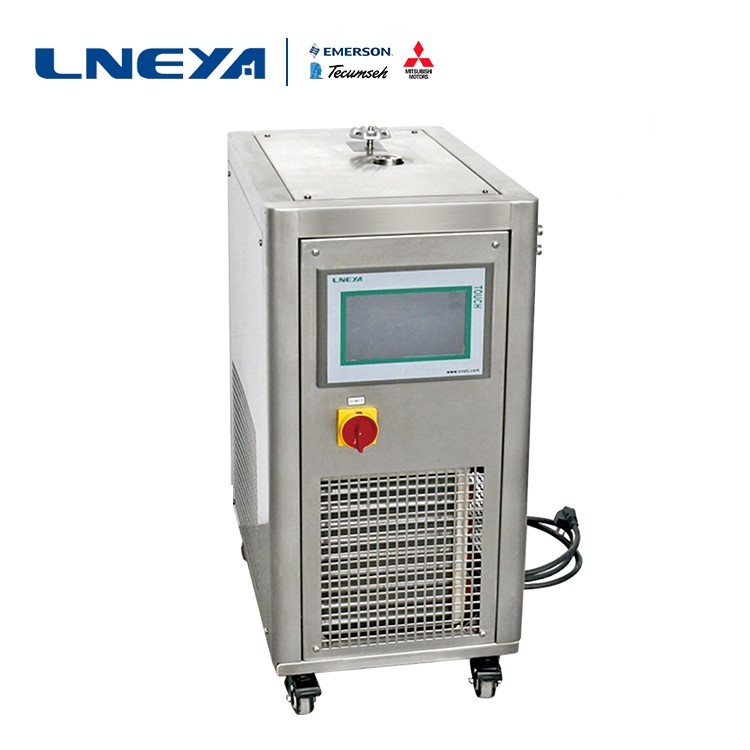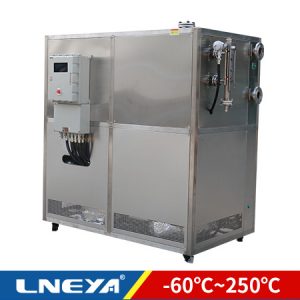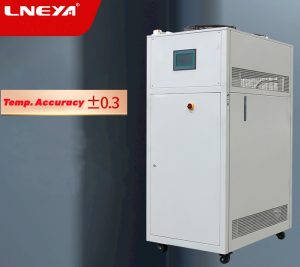LNEYA star refrigeration heating system SUNDI-320/420W/430W
Today, I will introduce the model of LNEYA’s refrigeration heating system: SUNDI-320/420W/430W. It has three kinds of medium temperature range: -30°C~180°C; -40°C~180°C; -40°C~200°C. The control system is programmed to program up to 10 programs, each of which can be programmed in 42 steps. The temperature feedback of the equipment is: equipment inlet temperature, equipment outlet temperature, reactor material temperature (external temperature sensor) three-point temperature.
Typical applications for refrigeration heating temperature control systems are the following:
1. Dynamic constant temperature control of cold heat source of high pressure reactor, dynamic constant temperature control of cold and heat source of double-layer glass reactor, dynamic constant temperature control of cold and heat source of double-layer reactor;
2. Microchannel reactor cold and heat source constant temperature control, small constant temperature control system, steaming system temperature control, material low temperature high temperature aging test;
3. Combined chemical cold source heat source constant temperature control, semiconductor equipment cooling heating, vacuum chamber cooling heating constant temperature control.

Advantages and functions of LNEYA refrigeration heating temperature control system:
1. Temperature range from -120 ° C to 350 ° C, superior performance, unique, high-precision, intelligent temperature control.
2. Higher cooling power from 0.5 to 1200 kW, highest production stability and repeatability results
Multi-function alarm system and safety function, using plate heat exchangers, ducted heaters to increase heating and cooling rates
3.7-inch, 10-inch color TFT touch screen graphic display, using magnetic drive pump, no shaft seal leakage problem
Fully enclosed system for extended thermal fluid life, very wide temperature range, no need to change liquid media
4. Ultra-high temperature cooling technology, can directly cool down from high temperature 300 degrees
Such a principle and function have many advantages for the user: because only the heat transfer medium in the expansion chamber is in contact with the oxygen in the air (and the temperature of the expansion tank is between room temperature and 60 degrees), the heat transfer medium can be reduced. The risk of oxidizing and absorbing moisture from the air.
No heat transfer medium evaporates at high temperature, and continuous control can be achieved with -80 to 190 degrees, -70 to 220 degrees, -88 to 170 degrees, -55 to 250 degrees, and -30 to 300 degrees without pressurization. temperature.
The fully enclosed pipeline design adopts high-efficiency plate heat exchanger to reduce the demand of thermal fluid while improving the heat utilization rate of the system and achieving rapid rise and fall temperature. The heat-conducting medium is in a closed system with an expansion container. The heat-conducting medium in the expansion container does not participate in the circulation. Whether it is high temperature or low temperature, the temperature of the expansion tank is normal temperature to 60 degrees, which can reduce the absorption and evaporation of the heat-conducting medium during operation. risk.
Related recommendations
-
Introduction to the quality and configuration of industrial refrigeration and heating circulators
1320With the development and progress of society, industrial refrigeration and heating circulators are used more in the industry, and the technological level is becoming more and more complex. So, what should users pay attention to after purchasing th...
View details -
Operation Instructions of Heating Cooling Circulator
1621Heating cooling circulator is a process that refrigerant transfers heat from low temperature state to high temperature state, so that its cooling can reach the state of low temperature environment, thus maintaining the low temperature state and re...
View details -
How to buy a laboratory chiller and maintenance knowledge?
1427Laboratory chillers are products that provide constant temperature cold sources in industry and laboratories. If they cannot provide accurate cooling capacity, it will affect the operation of the equipment. Therefore, the laboratory chiller should...
View details -
Harm of dust to thermal oil temperature control system of reactor
1368Dust in daily work will also have a certain impact on the circuit board work of the thermal oil temperature control system of the reactor. Dust is an unevenly dispersed system composed of particles suspended in the air. It mainly comes from indu...
View details
 LNEYA Industrial Chillers Manufacturer Supplier
LNEYA Industrial Chillers Manufacturer Supplier












